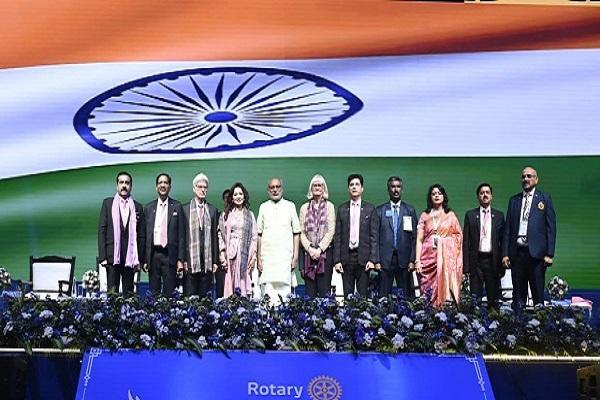
AI, Creators, and Tier-2 Cities Power India’s Startup Growth
India’s startup ecosystem has been gaining traction in recent years, with the country emerging as a hotbed for entrepreneurship and innovation. According to a report by Meta-A&M, the Indian startup scene is evolving fast, driven by the adoption of Artificial Intelligence (AI), omnichannel models, expansion into Tier-2 and Tier-3 cities, and creator-driven branding. In this blog post, we’ll delve into the key trends shaping India’s startup growth and explore what they mean for entrepreneurs, investors, and the broader ecosystem.
AI Adoption: The New Normal
The Meta-A&M report reveals that a staggering 70% of Indian startups are using AI in some form or the other. This adoption is not limited to large corporations or established players; even early-stage startups are leveraging AI to gain a competitive edge. AI is being used for a range of purposes, including process automation, customer segmentation, and personalized marketing.
One of the primary reasons for AI adoption is the need to scale efficiently. As startups grow, they need to manage increasing volumes of data, handle complex customer interactions, and make data-driven decisions. AI helps them do just that, enabling them to automate mundane tasks, identify patterns, and predict customer behavior.
Omnichannel Models: The Future of Customer Engagement
Another key trend shaping India’s startup growth is the adoption of omnichannel models. According to the report, 67% of Indian startups are using an omnichannel approach to engage with customers. Omnichannel models involve providing a seamless customer experience across multiple touchpoints, including social media, messaging apps, websites, and physical stores.
The rationale behind omnichannel adoption is simple: customers expect a unified experience across all channels. They want to be able to start a conversation on social media and pick it up on the website, or visit a physical store and continue the interaction online. Omnichannel models help startups deliver on this expectation, reducing friction and increasing customer satisfaction.
Tier-2 City Expansion: The Next Frontier
India’s startup growth is not limited to Tier-1 cities like Bengaluru, Delhi, and Mumbai. According to the report, 95% of Indian startups are targeting Tier-2 and Tier-3 cities as part of their expansion strategy. These cities offer a unique set of opportunities and challenges, including lower costs, a younger demographic, and a more vibrant startup ecosystem.
Tier-2 city expansion is driven by the need to access new markets, talent pools, and customer segments. Startups are finding that Tier-2 cities offer a more relaxed regulatory environment, lower costs, and a more collaborative startup ecosystem. As a result, entrepreneurs are flocking to these cities to set up shop and tap into the vast potential they offer.
Creator Economy: The Rise of Influencers
The Meta-A&M report also reveals that 88% of Indian startups are partnering with influencers early in their growth journey. The creator economy is a relatively new phenomenon, but it’s having a profound impact on the way startups market themselves and connect with customers.
Influencers offer startups a range of benefits, including increased brand awareness, credibility, and customer acquisition. They also provide a more personal and relatable touch, helping startups build deeper connections with their target audience.
What Does it Mean for Startups?
So, what does this all mean for startups in India? For one, it’s clear that AI adoption is no longer a nice-to-have, but a must-have for any startup looking to scale efficiently. AI can help startups automate processes, identify patterns, and make data-driven decisions, giving them a competitive edge in a crowded market.
Omnichannel models are also critical for startups, as they enable customers to engage with them on their preferred channels. This approach helps startups reduce friction, increase customer satisfaction, and build a loyal customer base.
Tier-2 city expansion is another key trend that startups should pay attention to. These cities offer a unique set of opportunities and challenges, and startups that are able to navigate them successfully can reap significant rewards.
Finally, the rise of the creator economy is a trend that startups should be embracing. Partnering with influencers early can help startups build brand awareness, credibility, and customer acquisition, giving them a head start in a crowded market.
What Does it Mean for Investors?
For investors, the trends shaping India’s startup growth are equally important. For one, AI adoption is a key indicator of a startup’s scalability and potential for growth. Startups that are able to leverage AI effectively are more likely to be successful in the long run.
Omnichannel models are also critical for investors, as they provide a clear indication of a startup’s commitment to customer engagement and experience. Startups that are able to deliver a seamless customer experience across multiple channels are more likely to retain customers and drive growth.
Tier-2 city expansion is another key trend that investors should be paying attention to. Startups that are able to successfully expand into Tier-2 cities are more likely to be successful in the long run, as they are better positioned to tap into emerging markets and customer segments.
Finally, the rise of the creator economy is a trend that investors should be embracing. Partnering with influencers early can help startups build brand awareness, credibility, and customer acquisition, giving them a head start in a crowded market.
Conclusion
India’s startup ecosystem is evolving fast, driven by the adoption of AI, omnichannel models, expansion into Tier-2 and Tier-3 cities, and creator-driven branding. These trends are reshaping how startups scale, connect with users, and build future-ready brands across India.
For startups, AI adoption is no longer a nice-to-have, but a must-have for scaling efficiently. Omnichannel models are critical for customer engagement, Tier-2 city expansion is a key opportunity for growth, and partnering with influencers early is a key strategy for building brand awareness and credibility.
For investors, AI adoption, omnichannel models, Tier-2 city expansion, and creator-driven branding are key indicators of a startup’s potential for growth and scalability. By paying attention to these trends, investors can identify startups that are best positioned for success in the long run.
As India’s startup ecosystem continues to evolve, it will be exciting to see how these trends shape the future of entrepreneurship and innovation in the country.






